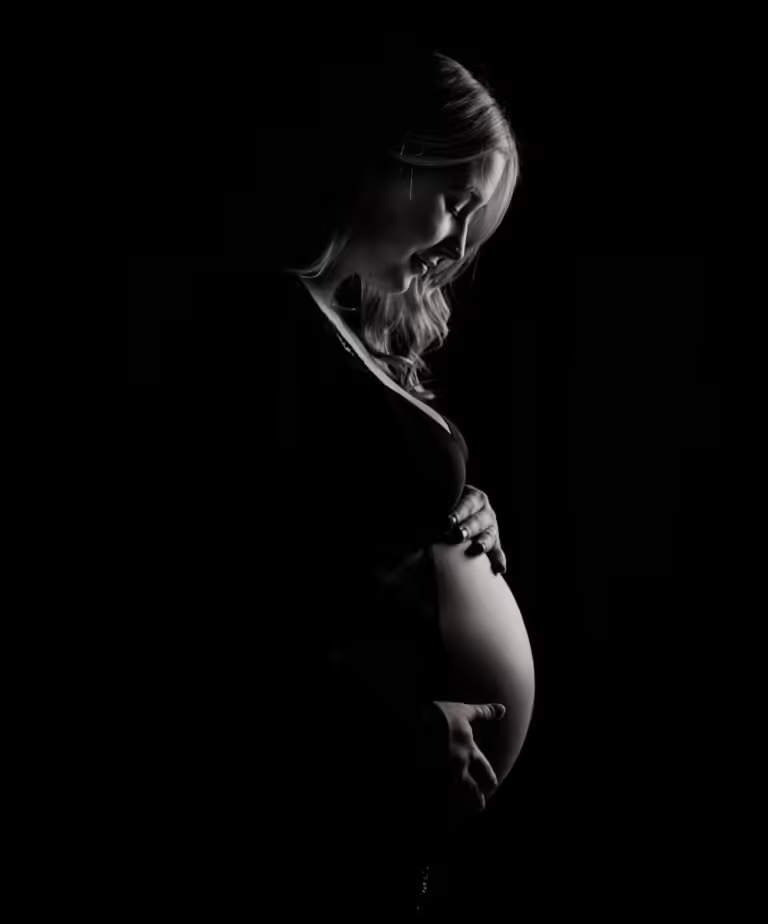For decades, the prevailing belief, even among medical professionals, was that babies were born practically blind, their vision a chaotic mess of blurry shapes and colors. New mothers were often told that their little ones could barely see anything at all, let alone recognize faces or objects. But groundbreaking research over the past few decades has completely overturned this outdated view, revealing a visual world far richer and more complex than we ever imagined.
This article delves into the fascinating findings of scientific studies that have revolutionized our understanding of infant vision. By carefully observing babies’ natural behaviors and responses to visual stimuli, researchers have been able to objectively measure what they see and how their visual perception evolves during that crucial first year of life.
From Blurry to Focused: The Rapid Development of Infant Acuity
One of the most significant breakthroughs in this field has been the development of the forced-choice preferential looking method. This ingenious technique, pioneered by psychologist Davida Y. Teller in the 1970s, has allowed scientists to accurately measure visual acuity in preverbal infants.
The method is based on a simple but powerful principle: babies have an innate preference for looking at patterned stimuli over plain ones. In Teller’s experiment, an infant is presented with a large gray screen. On one side of the screen, a black-and-white grating pattern is randomly displayed, while the other side remains plain gray. A hidden observer, blind to the grating’s location, watches the infant’s eye and body movements. If the infant can see the grating, their gaze and movements will betray its location to the observer.
Through this method, researchers have been able to track the development of visual acuity in infants with remarkable precision. It turns out that babies are not born blind at all. While their initial acuity is limited – around 1 to 2 cycles per degree of visual angle, equivalent to 20/400 vision – it improves at an astonishing rate.
To put this into perspective, a 3-month-old baby, with an average acuity of 3 cycles per degree (20/200 vision), can see the features of their caregiver’s face, their own hands and feet, and even objects as far away as the moon! By the age of one, their acuity reaches around 12 cycles per degree, and by 3-5 years old, they achieve adult-like vision.
Debunking the Myths: Infants See in Color and Contrast
The forced-choice preferential looking paradigm has also helped debunk other persistent myths about infant vision. Contrary to popular belief, babies are not limited to seeing only high-contrast black-and-white patterns. Studies have shown that they can perceive and discriminate between a wide range of colors from a very young age.
Furthermore, research has demonstrated that infants are not limited by their ability to focus. Although it was previously thought that babies could only focus on objects within a very short distance (around 18-25 cm), studies have shown that they can, in fact, adjust their focus to see objects at virtually any distance.
What Limits Infant Vision? Clues from Anatomy and Physiology
If infants are not limited by their ability to focus or perceive color, what then accounts for their initially blurry vision? The answer lies in the anatomical and physiological development of their visual system.
Studies of infant retinas and brains have revealed that the immaturity of certain structures, particularly the fovea (the central part of the retina responsible for sharp vision), plays a significant role. In newborns, the fovea has a lower density of photoreceptors (light-sensitive cells) compared to adults. As the infant grows, the density of these cells increases, and their light-capturing abilities improve, leading to a gradual sharpening of their vision.
The development of the visual cortex, the part of the brain that processes visual information, also plays a crucial role in improving visual acuity. This development continues throughout the first few years of life, contributing to the significant strides babies make in their visual perception.
Beyond Acuity: Unveiling the Complexities of Infant Visual Perception
While visual acuity is a fundamental aspect of vision, it’s just one piece of the puzzle. Researchers are now exploring other fascinating aspects of infant visual perception, including:
- Face Recognition: From a very young age, babies show a remarkable fascination with faces, particularly those of their caregivers. Studies have shown that infants as young as a few days old can distinguish between different facial expressions and even mimic simple facial movements. This early preference for faces highlights the importance of social interaction in infant development.
- Depth Perception: The ability to perceive depth is crucial for navigating the world and interacting with objects. While infants are not born with fully developed depth perception, they begin to develop this skill within the first few months of life. They use various visual cues, such as motion parallax (the difference in the apparent speed and direction of objects at different distances) and binocular disparity (the slightly different images received by each eye), to judge distances and perceive depth.
- Object Perception: Infants are constantly learning about the objects in their environment. They learn to recognize objects based on their shape, color, texture, and other visual features. Moreover, they develop an understanding of object permanence – the concept that objects continue to exist even when they are out of sight. This understanding is a crucial milestone in cognitive development.
The Importance of Early Detection and Intervention
Understanding the typical development of infant vision is not just a matter of scientific curiosity. It has crucial implications for the early detection and treatment of visual problems.
Conditions like amblyopia (lazy eye), strabismus (crossed eyes), and refractive errors (nearsightedness, farsightedness, astigmatism) can significantly impact a child’s visual development if left untreated. Early detection and intervention are critical for ensuring that these conditions don’t lead to long-term vision problems.
The Role of Parents and Caregivers
Parents and caregivers play a vital role in promoting healthy visual development in infants. Here are some things you can do:
- Schedule regular eye exams: It’s recommended that infants have their first eye exam at six months of age, followed by regular check-ups throughout childhood.
- Provide a stimulating visual environment: Offer your baby plenty of opportunities to explore their visual world. Provide them with age-appropriate toys that encourage visual tracking, grasping, and object exploration.
- Engage in face-to-face interaction: Spend quality time interacting with your baby face-to-face. Make eye contact, smile, and talk to them. This helps develop their social and emotional skills, as well as their visual system.
- Be aware of the signs of vision problems: Watch for any unusual eye movements, such as excessive eye rubbing, squinting, or difficulty tracking objects. If you notice anything concerning, consult your pediatrician or eye doctor immediately.
The Visual World of Infants: A Journey of Discovery
The journey of visual development in infants is a testament to the remarkable plasticity and adaptability of the human brain. From blurry first glimpses to the development of complex visual skills, infants demonstrate an incredible capacity for learning and adaptation. By understanding the intricacies of this process, we can better support their visual development and ensure they have the best possible start in life.
Further Research Expands Our Understanding: A Closer Look at Specific Milestones
Recent research has not only confirmed the remarkable capabilities of infant vision but has also provided a more nuanced understanding of the specific milestones that mark their visual journey.
Eye Contact and Early Interaction: The Foundation of Social Connection
One of the most heartwarming milestones in a baby’s development is the emergence of meaningful eye contact. This seemingly simple act lays the foundation for social and emotional bonding between infants and their caregivers. Studies have shown that babies as young as a few weeks old are drawn to faces and particularly to the eyes.
By two months of age, most infants develop stable eye contact, engaging in delightful exchanges of gazes with their parents. This back-and-forth interaction is crucial for developing social skills, emotional regulation, and language acquisition.
However, a delay in establishing eye contact can be a cause for concern, potentially signaling underlying visual or developmental issues. If an infant doesn’t engage in enjoyable eye contact by eight weeks of age, it’s crucial to consult a healthcare professional for a thorough evaluation.
The Significance of Hands: More Than Just Grasping
As infants grow, their hands transform from simple grasping tools to intricate instruments of exploration and learning. Vision plays a critical role in this transformation, guiding hand movements and providing essential feedback about the environment.
During the first few months, babies’ hand movements may seem random and uncoordinated. However, research has shown that even newborns demonstrate purposeful reaching and grasping behaviors, particularly when they can see their hands or objects within their reach.
By five months, infants have developed more refined hand-eye coordination, using visual information to guide their reach and grasp with increasing accuracy. This ability to coordinate vision and movement is essential for a wide range of skills, from playing with toys to self-feeding.
Recognizing Faces: A Complex and Evolving Skill
The ability to recognize faces is a complex process that unfolds gradually throughout infancy and childhood. While newborns are naturally drawn to faces, their ability to distinguish between individual faces develops over time.
Between eight and ten months, infants begin to show signs of recognizing familiar faces, often displaying delight and excitement when they see their caregivers. This recognition is based on learning and remembering the unique features that distinguish one face from another.
However, some infants may experience difficulties with face recognition, a condition known as prosopagnosia or face blindness. This can be due to various factors, including genetic predisposition or brain injury. It’s important to note that face blindness is not a sign of autism but rather a specific impairment in processing facial information.
Matching Abstract Forms: Preparing for Vision Testing
As infants approach their first birthday, their visual skills continue to mature, and they become increasingly capable of perceiving and discriminating between complex shapes and patterns. This ability is crucial for developing early literacy skills, as it forms the foundation for recognizing letters and numbers.
One way to assess and encourage this skill is through play activities that involve matching abstract forms, such as simple puzzles. By manipulating puzzle pieces and attempting to fit them together, infants develop their spatial reasoning, problem-solving abilities, and visual discrimination skills.
Conclusion: A Call for Continued Exploration and Understanding
The research highlighted in this article has significantly advanced our understanding of the remarkable visual world of infants. We now know that babies are not born blind but rather embark on an extraordinary journey of visual development from the moment they enter the world.
By embracing this knowledge and continuing to explore the complexities of infant vision, we can provide the best possible care for our youngest generation, ensuring they have the visual foundation they need to thrive and reach their full potential.








